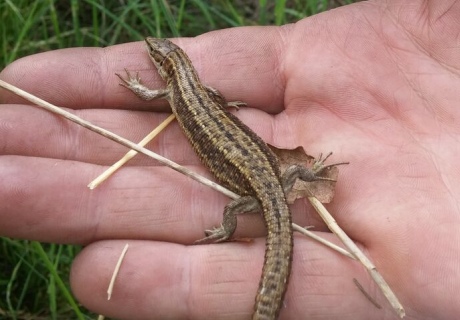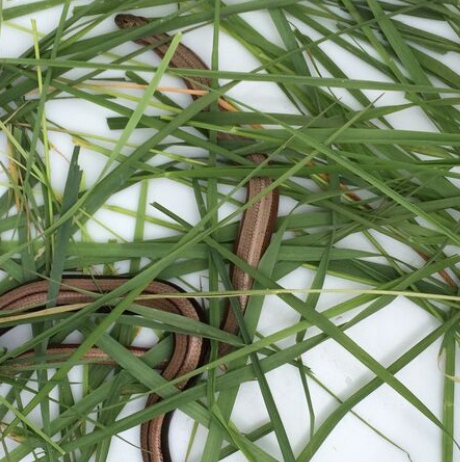
The common lizard is found across Europe and Asia (Credit: Emi/Shutterstock)

Common lizards and slow worms are being relocated from a nearby building site to Imperial's Silwood Park Campus.
Both species are protected in the UK under the Wildlife and Countryside Act, and new building sites must be surveyed for them. They were found on a building site near Silwood Park, and as their habitat was under threat, it was decided to find a new home for them. Approximately 50 creatures are expected to be moved.

Common lizards give birth to live young instead of laying eggs like most of their relatives
The rural Silwood Park Campus, in Berkshire, is home to much of Imperial’s research and teaching in ecology, evolution and conservation, and this - together with its abundant habitat - makes it an ideal place to release the homeless reptiles. Deputy Head of the Department of Life Sciences at Imperial Professor Vincent Savolainen said the release may also form a part of future student projects.
“We encourage wildlife on campus and there are plenty of sites available. The grounds host several ongoing long-term experiments investigating big questions in ecology using local wildlife,” he said. “However, there haven’t been any surveys of reptiles on campus for a long time, so this relocation project could provide a good opportunity for students to monitor how the population changes in the coming years.”
Sites around Silwood Park were surveyed in March and April, and lizards have now started to be released at the best locations. The release is being managed by Andrew Ross from Clarkson & Woods ecological consultants, who will be trapping and releasing common lizards and slow worms daily for the next couple of weeks.

Despite been called worms and having the appearance of snakes, slow worms are actually legless lizards
Rather than using physical traps, Andrew Ross is catching the lizards using their love of heat. Roofing felt or tin sheets that warm up in the Sun are being propped up around the site, attracting lizards that need the heat to regulate their body temperature. Lizards found basking underneath can then be taken off to their new home.
Heat traps were also used in Silwood Park before the relocation to monitor the numbers of slow worms and common lizards already living in the prospective release sites. Numbers must be low enough to ensure an influx of new residents would not overwhelm the local ecosystem.
Slow worms and common lizards both need habitats that have a good selection of prey and a variety of vegetation, so they can hide when necessary in thick undergrowth but also bask in open patches of sunlight. They also hibernate in the winter, requiring a deep or well-covered area, such as a pile of wood.
Despite been called worms and having the appearance of snakes, slow worms are actually lizards, albeit legless ones, as identified by their ability to blink their eyelids and re-grow their tails. Common lizards are also slightly odd reptiles, giving birth to live young instead of laying eggs like most of their relatives.
Article text (excluding photos or graphics) available under an Attribution-NonCommercial-ShareAlike Creative Commons license.
Photos and graphics subject to third party copyright used with permission or © Imperial College London.
Reporter
Hayley Dunning
Communications Division

Contact details
Tel: +44 (0)20 7594 2412
Email: h.dunning@imperial.ac.uk
Show all stories by this author




Leave a comment
Your comment may be published, displaying your name as you provide it, unless you request otherwise. Your contact details will never be published.